Leyland
Atlantean
https://en.wikipedia.org/wiki/Leyland_Atlantean
Readers
may find this (click here) anecdote of interest.
From
1958 to 1972 some nine-hundred buses were built for Tehran (Iran); the first
batches up to 12/1967 were 250 AEC Regent V and the last batches from 1972 to
1974/5 comprised 650 Leyland Atlanteans; making the Shah of Persia PRV's most
important overseas buyer.
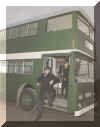 Here is the Shah (Mohammad Reza
Pahlavi [1919-1980]) - stepping out of one of his new Atlanteans circa 1972 (he is on the platform
holding on to the vertical pole). I don't know where this was pictured -
it seems it might be an airfield - nor do I know who the man stepping vigorously
off the platform is; anyone know?
Here is the Shah (Mohammad Reza
Pahlavi [1919-1980]) - stepping out of one of his new Atlanteans circa 1972 (he is on the platform
holding on to the vertical pole). I don't know where this was pictured -
it seems it might be an airfield - nor do I know who the man stepping vigorously
off the platform is; anyone know?
https://en.wikipedia.org/wiki/Mohammad_Reza_Pahlavi
(Image from the Don Matthews collection)
 An Atlantean without it's body
panels isn't quite so interesting, is it!?
An Atlantean without it's body
panels isn't quite so interesting, is it!?
 TCH
92 - Leyland Atlantean with Roe H44/34F body GO5145 built October 1960 for
Trent; pictured at (probably) the 1960 Earls Court Commercial Motor show.
TCH
92 - Leyland Atlantean with Roe H44/34F body GO5145 built October 1960 for
Trent; pictured at (probably) the 1960 Earls Court Commercial Motor show.




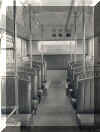
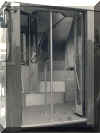 Registration Number 926MPT Built
in April 1964 (Body Nos. B49764-7); for Stockton.
Registration Number 926MPT Built
in April 1964 (Body Nos. B49764-7); for Stockton.
 Registration Number CWB340B Built
in November 1964 (Body Nos. B51744); for Sheffield.
Registration Number CWB340B Built
in November 1964 (Body Nos. B51744); for Sheffield.





 Registration Number KTD551C Built
in January 1965 (Body No. B52907); for Leyland [Demonstrator].
Registration Number KTD551C Built
in January 1965 (Body No. B52907); for Leyland [Demonstrator].



 Registration Number JWJ193D Built
in February 1966 (Body Nos. B53284-95); for Sheffield.
Registration Number JWJ193D Built
in February 1966 (Body Nos. B53284-95); for Sheffield.



 Registration Number NFT215D Built
in May 1966 (Body Nos. B51796-9); for Stockton.
Registration Number NFT215D Built
in May 1966 (Body Nos. B51796-9); for Stockton.





 Registration Number CUV2C Built
in May 1966 (Body Nos. B52910-59); for L.T.E.
Registration Number CUV2C Built
in May 1966 (Body Nos. B52910-59); for L.T.E.



 Registration Number TWE114F Built
in May 1966 (Body Nos. B55832-47); for Sheffield. One of this series of buses
appears in the film "Memories of Trams, Buses & Trolleybuses" on
the
"PRVdesign
Group" page.
Registration Number TWE114F Built
in May 1966 (Body Nos. B55832-47); for Sheffield. One of this series of buses
appears in the film "Memories of Trams, Buses & Trolleybuses" on
the
"PRVdesign
Group" page.



 Registration Number BWB555H Built
in May 1966 (Body Nos. B56868-907); for Sheffield.
Registration Number BWB555H Built
in May 1966 (Body Nos. B56868-907); for Sheffield.

 Storstockholms Lokaltrafik
(Greater Stockholm Transport Board) operated
Atlantean
double-deckers bodied by Park Royal. Photos © Dick HallstrŲm
Storstockholms Lokaltrafik
(Greater Stockholm Transport Board) operated
Atlantean
double-deckers bodied by Park Royal. Photos © Dick HallstrŲm
Fifty
Leyland double-deckers were also delivered in 1967, mostly running on ex-tramway lines in the
town centre. They were supposed to have the same seating capacity as a two-car tramway
set but on some routes passengers didn't use the upper floor, and on other
routes it was vice versa (there were problems with inappropriate activities on the upper
deck during evenings & weekends). So, together with forty German BŁssing
double-deckers, all Leylands were scrapped after only 9 years. Fortunately three Leylands are
preserved in running condition; one at the SpŚrvšgsmuseet (Stockholm
Transport
Museum) and two at the Svenska SpŚrvšgssšllskapet
(Swedish Tramway Association).
Please
visit the Svenska Omnibusföreningen (Swedish Omnibus
Association) website where you will find links to photos and descriptions of
their preserved buses (in Swedish but the Google toolbar translator largely
solves the issue for those like me! Ed.).







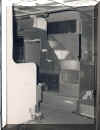
Registration Number A74533 Built
in October 1967 (Body Nos. B54978-5027); for Stockholm. Click here
to see detailed unofficial images of the first of this batch of 50 units, as it
was in final production.





 Registration Number HVM924P Built
in March 1968 (Body Nos. B55359-406); for Manchester.
Registration Number HVM924P Built
in March 1968 (Body Nos. B55359-406); for Manchester.



 Registration Number PRJ315G Built
in July 1968 (Body Nos. B56823-42); for Salford.
Registration Number PRJ315G Built
in July 1968 (Body Nos. B56823-42); for Salford.





 Registration Number WWB214G Built
in October 1968 (Body Nos. B55744-73); for Sheffield. One of this series of
buses appears in the film "Memories of Trams, Buses & Trolleybuses"
on the
"PRVdesign
Group" page.
Registration Number WWB214G Built
in October 1968 (Body Nos. B55744-73); for Sheffield. One of this series of
buses appears in the film "Memories of Trams, Buses & Trolleybuses"
on the
"PRVdesign
Group" page.



 Registration Number MTF665G Built
in October 1968 (Body No. B55794); for Leyland [Demonstrator]. This bus appears
in the film "Memories of Trams, Buses & Trolleybuses" on the
"PRVdesign
Group" page.
Registration Number MTF665G Built
in October 1968 (Body No. B55794); for Leyland [Demonstrator]. This bus appears
in the film "Memories of Trams, Buses & Trolleybuses" on the
"PRVdesign
Group" page.



 Registration Number JJY634G Built
in November 1968 (Body Nos. B56089-112); for Plymouth.
Registration Number JJY634G Built
in November 1968 (Body Nos. B56089-112); for Plymouth.



 Registration Number PBC113G Built
in April 1969 (Body Nos. B56136-45); for Leicester.
Registration Number PBC113G Built
in April 1969 (Body Nos. B56136-45); for Leicester.



 Registration Number OCS817H Built
in October 1969 (Body No. B56722); for T. E. Docherty.
Registration Number OCS817H Built
in October 1969 (Body No. B56722); for T. E. Docherty.



 Registration Number DWB676H Built
in April 1970 (Body Nos. B57014-53); for Sheffield.
Registration Number DWB676H Built
in April 1970 (Body Nos. B57014-53); for Sheffield.



 Registration Number MCO216H Built
in May 1970 (Body Nos. B57152-70); for Plymouth.
Registration Number MCO216H Built
in May 1970 (Body Nos. B57152-70); for Plymouth.



 Registration Number ONF853H Built
in September 1970 (Body Nos. B57211-44); for Selnec P.T.E.
Registration Number ONF853H Built
in September 1970 (Body Nos. B57211-44); for Selnec P.T.E.



 Registration Number NDR506J Built
March 1971 (Body Nos. B58161-75); for Plymouth.
Registration Number NDR506J Built
March 1971 (Body Nos. B58161-75); for Plymouth.
 Registration Number JPL104K Built
in April 1972 (Body No. B58337); alongside AEC Reliance JPA169K Built in
March 1972 (Body No. B58313); both for London Country Buses and shown here
at the PRV works.
Registration Number JPL104K Built
in April 1972 (Body No. B58337); alongside AEC Reliance JPA169K Built in
March 1972 (Body No. B58313); both for London Country Buses and shown here
at the PRV works.
 Registration Number XJA506L Built
in October 1972 (Body Nos. B59723-67); for SELNEC.
Registration Number XJA506L Built
in October 1972 (Body Nos. B59723-67); for SELNEC.






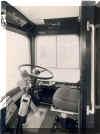 Registration Number RTF624M Built
in December 1973 (Body Nos. B60592-633); for Ribble.
Registration Number RTF624M Built
in December 1973 (Body Nos. B60592-633); for Ribble.
 Registration Number RTF614M Built
in January 1974 (Body Nos. B60594); for Ribble.
Registration Number RTF614M Built
in January 1974 (Body Nos. B60594); for Ribble.






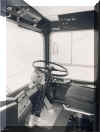 Registration Number OTY412M Built
in March 1974 (Body Nos. B60634-54); for Northern General.
Registration Number OTY412M Built
in March 1974 (Body Nos. B60634-54); for Northern General.




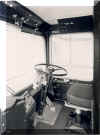 Registration Number VPB123M Built
in May 1974 (Body Nos. B60655-7); for London Country.
Registration Number VPB123M Built
in May 1974 (Body Nos. B60655-7); for London Country.






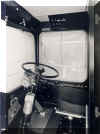 Registration Number PUF131M Built
in May 1974 (Body Nos. B60658-84); for Southdown.
Registration Number PUF131M Built
in May 1974 (Body Nos. B60658-84); for Southdown.






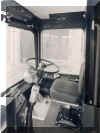 Registration Number GDR208N Built
in April 1975 (Body Nos. B60822-36); for Plymouth.
Registration Number GDR208N Built
in April 1975 (Body Nos. B60822-36); for Plymouth.
 Registration Number JOV629P Built
in September 1975 (Body Nos. B60224-323); for West Midlands.
Registration Number JOV629P Built
in September 1975 (Body Nos. B60224-323); for West Midlands.



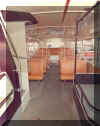
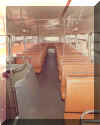

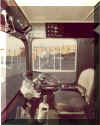 Registration Number NRN400P Built
in April 1976 (Body Nos. B61730-63); for Ribble. (Photographs
Copyright
© (3)).
Registration Number NRN400P Built
in April 1976 (Body Nos. B61730-63); for Ribble. (Photographs
Copyright
© (3)).
One
of the same batch NRN397P (Ribble 1397) built in April 1976 (Body No. B61756)
has been undergoing renovation at the Ribble
Vehicle Preservation Trust
since 2008. Evidently in a shocking state, the extensive renovation has
clearly been arduous as can be witnessed by following the work on the RVPT's
forum entries dedicated to the process (see NRN397P
in renovation).
Jonathan
Cadwallader has kindly sent in photographs that can be seen on the NRN397P
page.
 Registration Numbers WVM884-9 (5
is missing) built
in July 1978 (Body Nos. B61584-703); for Greater Manchester.
Registration Numbers WVM884-9 (5
is missing) built
in July 1978 (Body Nos. B61584-703); for Greater Manchester.
0----------0----------0----------0----------0
Jeffrey
Ornstein sent me a link to a YouTube video of Leyland Atlanteans in New York,
USA. PRV
built eight of these for the New York City Transit Authority in August
1976. They were body numbers B62061-8 (type H43/29D) and were on
Leyland Atlantean chassis type AN68.
Click
here for Leyland Atlanteans with PRV Bodywork in New York City
0----------0----------0----------0----------0
Registration Number
A74501 Built
in September 1967 (Body No. B54978); for Stockholm. This is the first of the
batch of 50 units for Stockholm of which the official photographs of a sample
are found above. The images below are unofficial photographs taken as the first
unit was in final production. Click here for a the
official photographs of a pre-delivery vehicle.
You
may notice, in the monochrome images below, how this bus differs from the bus shown in the official photographs - it is much darker
- and it probably wasn't. Stockholm's buses at the time were in a livery of deep red with a
cream upper section or stripe. So why the difference in the images?
The images below may have been taken on orthochromatic
negative film
that, being insensitive to red, rendered red as
almost black on a positive print - because the red areas of the negative are
unexposed and virtually clear. The panchromatic film, used in the official
photographs, being sensitive to red, rendered it as a distinct shade of grey.
Note; panchromatic film is less sensitive to green which results
in greenery being relatively dark, whilst the opposite is true for
orthochromatic film.
However, by the 1930's panchromatic film superseded orthochromatic film and,
although much stock remained available for many years, it is unlikely that it
was being used in the '60's. So is there another explanation? Well, yes,
there is! A
cyan filter over the lens would reduce the transmission of red light and thus
produce the same result (red showing as black rather than grey) on prints from
panchromatic film. However, whilst these photographs are quite good, they
are clearly amateur and, in my opinion, it is unlikely that such an otherwise
rarely used filter would be employed.
The
most likely explanation is that the images are direct prints from colour negatives that tend to be
lacking in contrast due to the overall reddish-orange tinge used for
colour-masking. Monochrome photographic paper is
orthochromatic (insensitive to red and more blue/green sensitive so can be
developed in red light) and since colour negatives are colour-reversed with
positive red appearing as cyan-green, the red
parts, that are cyan-green on the negative, would cause cyan-green light to be shone on the
monochrome photographic paper and with the paper being sensitive to blue-green-cyan that
part of the image would appear much darker. Ed. [Ok, so maybe they painted the
first one black!]

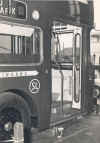

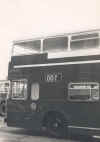




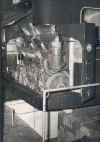





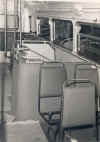
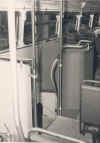
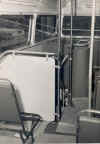
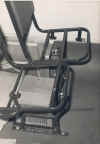
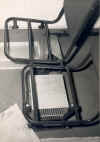

0----------0----------0----------0----------0
Registration
Number 681KD, Built
in February 1964, is a Metro Cammell bodied Atlantean PDR1/1 for Liverpool Corporation;
fleet number L681. Jonathan
Cadwallader advises that that the images
were taken at Liverpool Corporation's Edge Lane Works.
"Older, front-engined buses in for overhaul are visible through the windows in at least two of the
images." He also suggests the photographs are not of a newly built bus judging by the chassis picture and the internal advertisements displayed on the lower
deck. (I
agree this is undoubtedly certain as one of the chassis images shows a fair
amount of road grime and the tyres are unclean. Ed.)
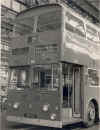
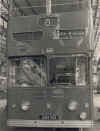
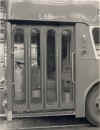
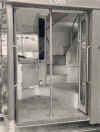
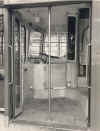
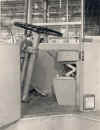
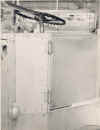

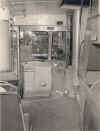
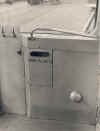
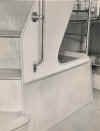



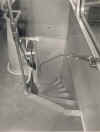
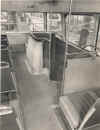








(Photographs
Copyright
© (4)).
Jonathan
further comments that 681KD was one of 380 broadly similar MCW bodied PDR1/1 Atlanteans bought by Liverpool Corporation. The design was innovative and apparently widely admired, though only Bury and Oldham Corporations ordered similar bodies from
Metro-Cammell. The interiors were relatively spartan with quite a lot of bare aluminium panels. The first batch was registered 500 KD - 699KD
(with fleet numbers L500 - L699) and were delivered from November 1962 (501KD is preserved by the
Merseyside Transport
Trust and here
it is during Easter 2011).
In July the following year it was decided to order a further
120 and although a contract was eventually placed with
Metro-Cammell, five other bodybuilders submitted tenders for the work, including
Willowbrook, Strachans, Alexanders and Park Royal. Without a date on the photos of L681 we cannot be certain, but I would speculate that, before submitting their tender, Park Royal sent a photographer to Edge Lane Works to make a record of the sort of finish and appearance that Liverpool Corporation was expecting. By the time that tenders were invited all of the first batch were in service, so L681,
being one of the last to be delivered, was selected to be the subject for the
photographer
So, that's my theory. Park Royal lost out but the photographs survived in their archive. Of course, it's also possible that Liverpool took the photographs themselves and sent a set to each of the bidding coachbuilders.
Editor: I think Jonathan may well be correct in his analysis of how the
photographs came to be in the PRV archives. However these
photographs are marked with LTB Director of Research, Chiswick as the copyright
holder and that probably doesn't mean that they are actually from their
photographer; merely stamped as incoming to that department. I think it most likely that LTB were "looking" at the Atlantean as an OPO vehicle to
replace (run alongside) Routemasters, the production of which was in decline by the mid 60's. It's quite likely that LTB were in touch with Liverpool
Corporation over this and LTB obtained the images (probably from the
Corporation) and passed them to PRV as PRV were their preferred supplier. (Can
anyone comment further?)
0----------0----------0----------0----------0
 Here is the Shah (Mohammad Reza
Pahlavi [1919-1980]) - stepping out of one of his new Atlanteans circa 1972 (he is on the platform
holding on to the vertical pole). I don't know where this was pictured -
it seems it might be an airfield - nor do I know who the man stepping vigorously
off the platform is; anyone know?
Here is the Shah (Mohammad Reza
Pahlavi [1919-1980]) - stepping out of one of his new Atlanteans circa 1972 (he is on the platform
holding on to the vertical pole). I don't know where this was pictured -
it seems it might be an airfield - nor do I know who the man stepping vigorously
off the platform is; anyone know? 






















































































































































































